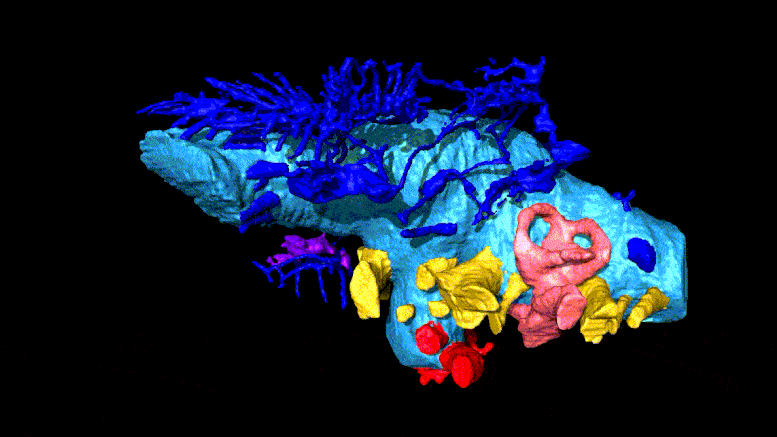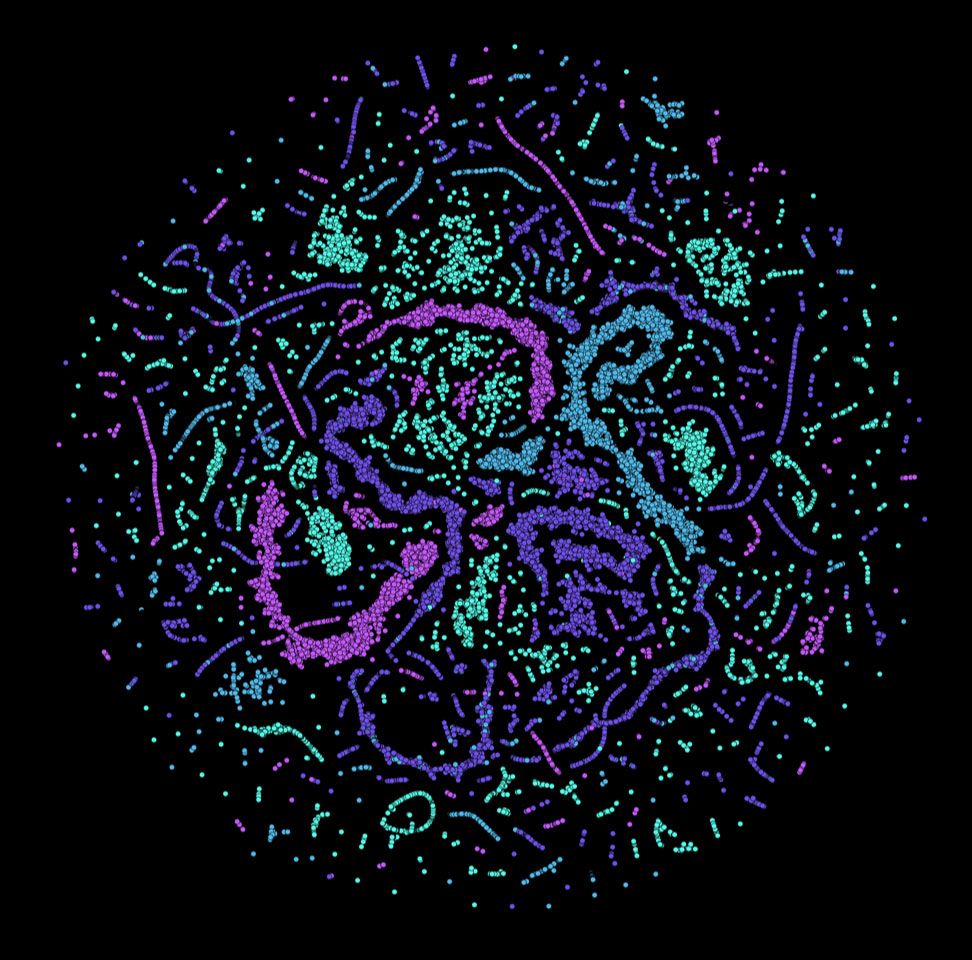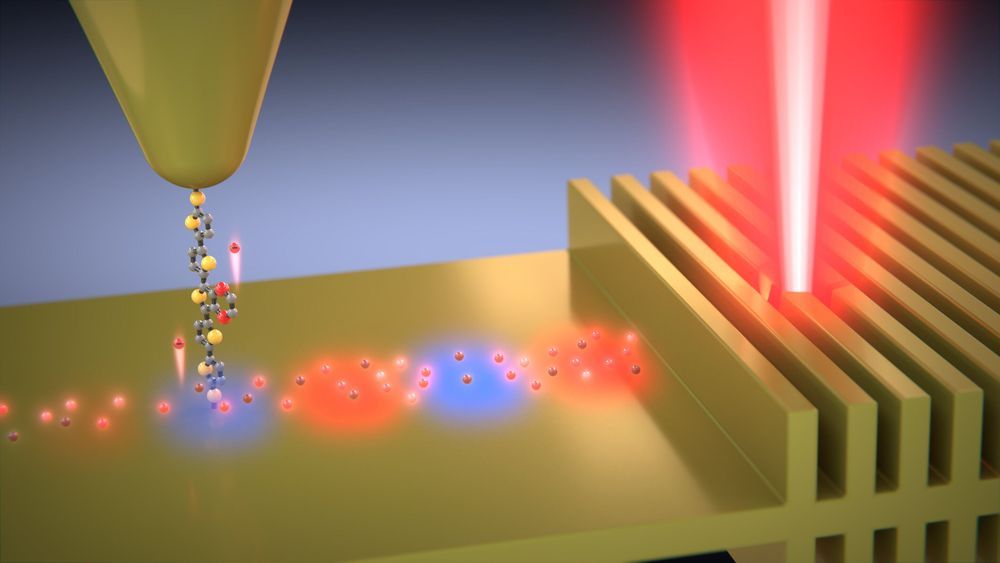Page 7484
Jun 5, 2020
To Think Like a Dinosaur: Paleontologists Created the Most Detailed 3D-Model of Ankylosaur Brain
Posted by Genevieve Klien in categories: biotech/medical, computing, neuroscience
Paleontologists at St Petersburg University created the most detailed virtual 3D-model of the endocranial cast and blood vessels of the head of an ankylosaurian.
Paleontologists from St Petersburg University have been the first to study in detail the structure of the brain and blood vessels in the skull of the ankylosaur Bissektipelta archibaldi. It was a herbivorous dinosaur somewhat similar in appearance to a modern armadillo. The first three-dimensional computer reconstruction of a dinosaur endocast made in Russia — a digital cast of its braincase — was of help to the scientists. It made it possible to find out that ankylosaurs, and Bissektipelta in particular, were capable of cooling their brains, had an extremely developed sense of smell, and heard low-frequency sounds. However, their brain was one and a half times smaller than that of modern animals of the same size.
Ankylosaurs appeared on Earth in the middle of the Jurassic — about 160 million years ago — and existed until the end of the dinosaur era, which ended 65 million years ago. These herbivorous animals were somewhat reminiscent of modern turtles or armadillos, were covered with thick armor, and sometimes even had a bony club on the tail. The researchers became interested in the uniquely-preserved remains of ankylosaurs from Uzbekistan. Although these fossils have been known for 20 years, only now have the scientists had a unique opportunity to study the specimens from the inside using cutting-edge methods.
Jun 5, 2020
2D materials insight opens door for next-gen devices
Posted by Genevieve Klien in categories: computing, quantum physics
A visualization of the electronic structure of semiconductors made with 2D materials may pave the way for quantum computers and better mobile devices.
Over the last few years, the size of deep learning models has increased at an exponential pace (famously among language models):
And in fact, this chart is out of date. As of this month, OpenAI has announced GPT-3, which is a 175 billion parameter model—or roughly ten times the height of this chart.
As models grow larger, they introduce new infrastructure challenges. For my colleagues and I building Cortex (open source model serving infrastructure), these challenges are front and center, especially as the number of users deploying large models to production increases.
Jun 5, 2020
Could a novel UV light device inactivate SARS-CoV-2 on surfaces?
Posted by Genevieve Klien in categories: biotech/medical, innovation
Researchers suggest that an innovative handheld UV light device could effectively sanitize surfaces, killing pathogens including SARS-CoV-2.
Jun 5, 2020
Faces, Bodies, Spiders, and Radios: How the Brain Represents Visual Objects
Posted by Genevieve Klien in categories: biotech/medical, mathematics, neuroscience, robotics/AI
When Plato set out to define what made a human a human, he settled on two primary characteristics: We do not have feathers, and we are bipedal (walking upright on two legs). Plato’s characterization may not encompass all of what identifies a human, but his reduction of an object to its fundamental characteristics provides an example of a technique known as principal component analysis.
Now, Caltech researchers have combined tools from machine learning and neuroscience to discover that the brain uses a mathematical system to organize visual objects according to their principal components. The work shows that the brain contains a two-dimensional map of cells representing different objects. The location of each cell in this map is determined by the principal components (or features) of its preferred objects; for example, cells that respond to round, curvy objects like faces and apples are grouped together, while cells that respond to spiky objects like helicopters or chairs form another group.
The research was conducted in the laboratory of Doris Tsao (BS ‘96), professor of biology, director of the Tianqiao and Chrissy Chen Center for Systems Neuroscience and holder of its leadership chair, and Howard Hughes Medical Institute Investigator. A paper describing the study appears in the journal Nature on June 3.
Jun 5, 2020
AI Controlled Quantum Error Correction System Capable of Learning
Posted by Genevieve Klien in categories: quantum physics, robotics/AI
Learning quantum error correction: the image visualizes the activity of artificial neurons in the Erlangen researchers’ neural network while it is solving its task. © Max Planck Institute for the Science of Light.
Neural networks enable learning of error correction strategies for computers based on quantum physics
Quantum computers could solve complex tasks that are beyond the capabilities of conventional computers. However, the quantum states are extremely sensitive to constant interference from their environment. The plan is to combat this using active protection based on quantum error correction. Florian Marquardt, Director at the Max Planck Institute for the Science of Light, and his team have now presented a quantum error correction system that is capable of learning thanks to artificial intelligence.
Going without sleep for too long kills animals but scientists haven’t known why. Newly published work suggests that the answer lies in an unexpected part of the body.
Jun 5, 2020
This startup is using AI to give workers a “productivity score”
Posted by Genevieve Klien in categories: biotech/medical, robotics/AI
In the last few months, millions of people around the world stopped going into offices and started doing their jobs from home. These workers may be out of sight of managers, but they are not out of mind. The upheaval has been accompanied by a reported spike in the use of surveillance software that lets employers track what their employees are doing and how long they spend doing it.
Companies have asked remote workers to install a whole range of such tools. Hubstaff is software that records users’ keyboard strokes, mouse movements, and the websites that they visit. Time Doctor goes further, taking videos of users’ screens. It can also take a picture via webcam every 10 minutes to check that employees are at their computer. And Isaak, a tool made by UK firm Status Today, monitors interactions between employees to identify who collaborates more, combining this data with information from personnel files to identify individuals who are “change-makers.”
Jun 5, 2020
Discovery unlocks ‘hot’ electrons for more efficient energy use
Posted by Genevieve Klien in categories: solar power, sustainability
Highly energetic, “hot” electrons have the potential to help solar panels more efficiently harvest light energy.
But scientists haven’t been able to measure the energies of those electrons, limiting their use. Researchers at Purdue University and the University of Michigan built a way to analyze those energies.
“There have been many theoretical models of hot electrons but no direct experiments or measurements of what they look like,” said Vladimir “Vlad” Shalaev (shal-AYV), Purdue University’s Bob and Anne Burnett Distinguished Professor of Electrical and Computer Engineering, who led the Purdue team in this collaborative work.


















